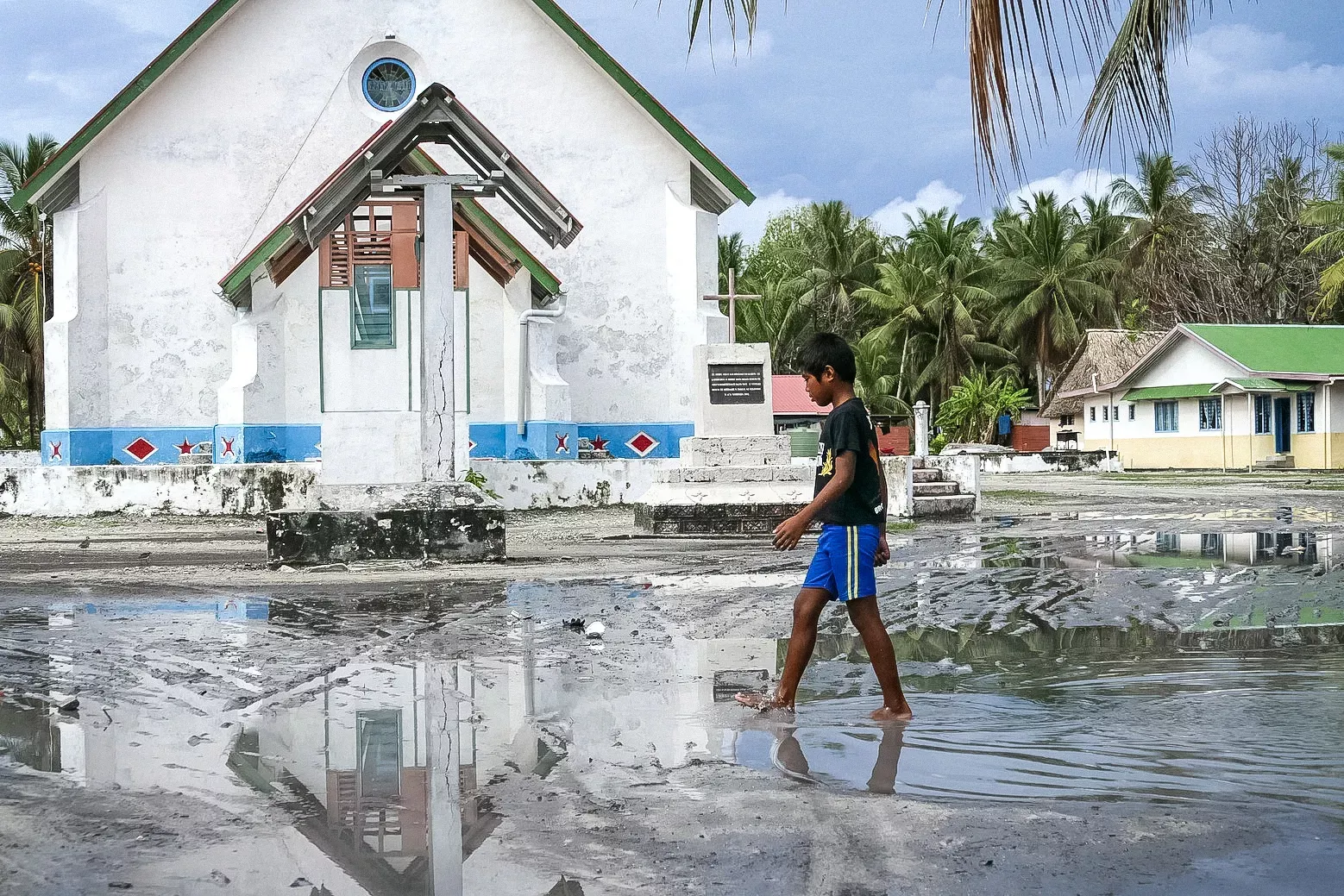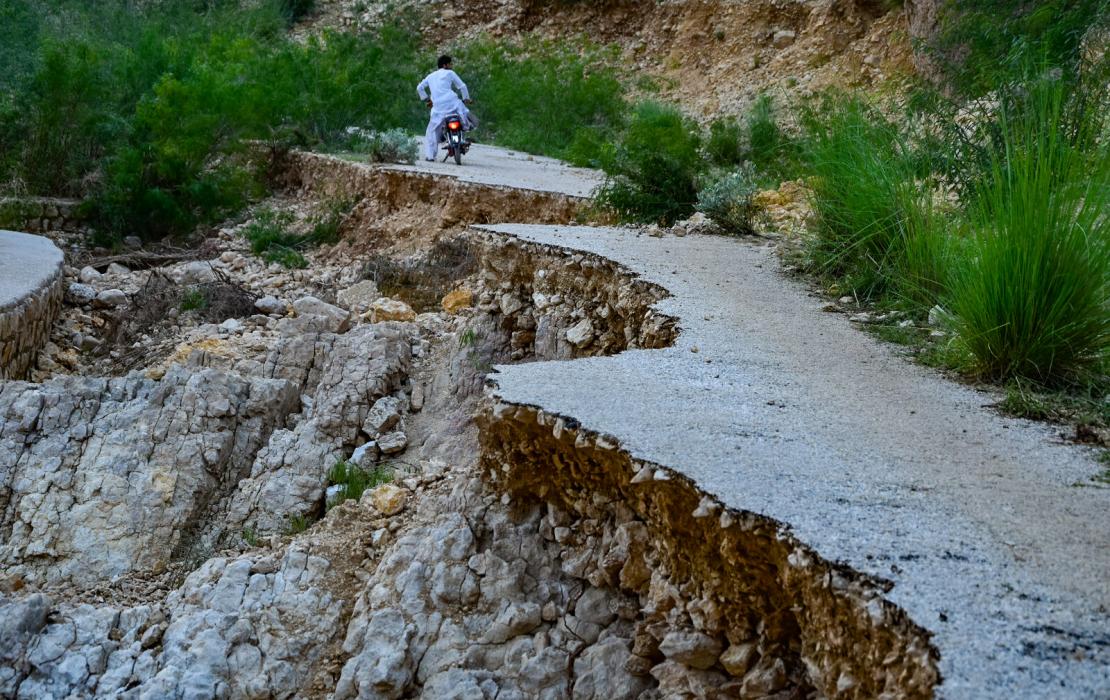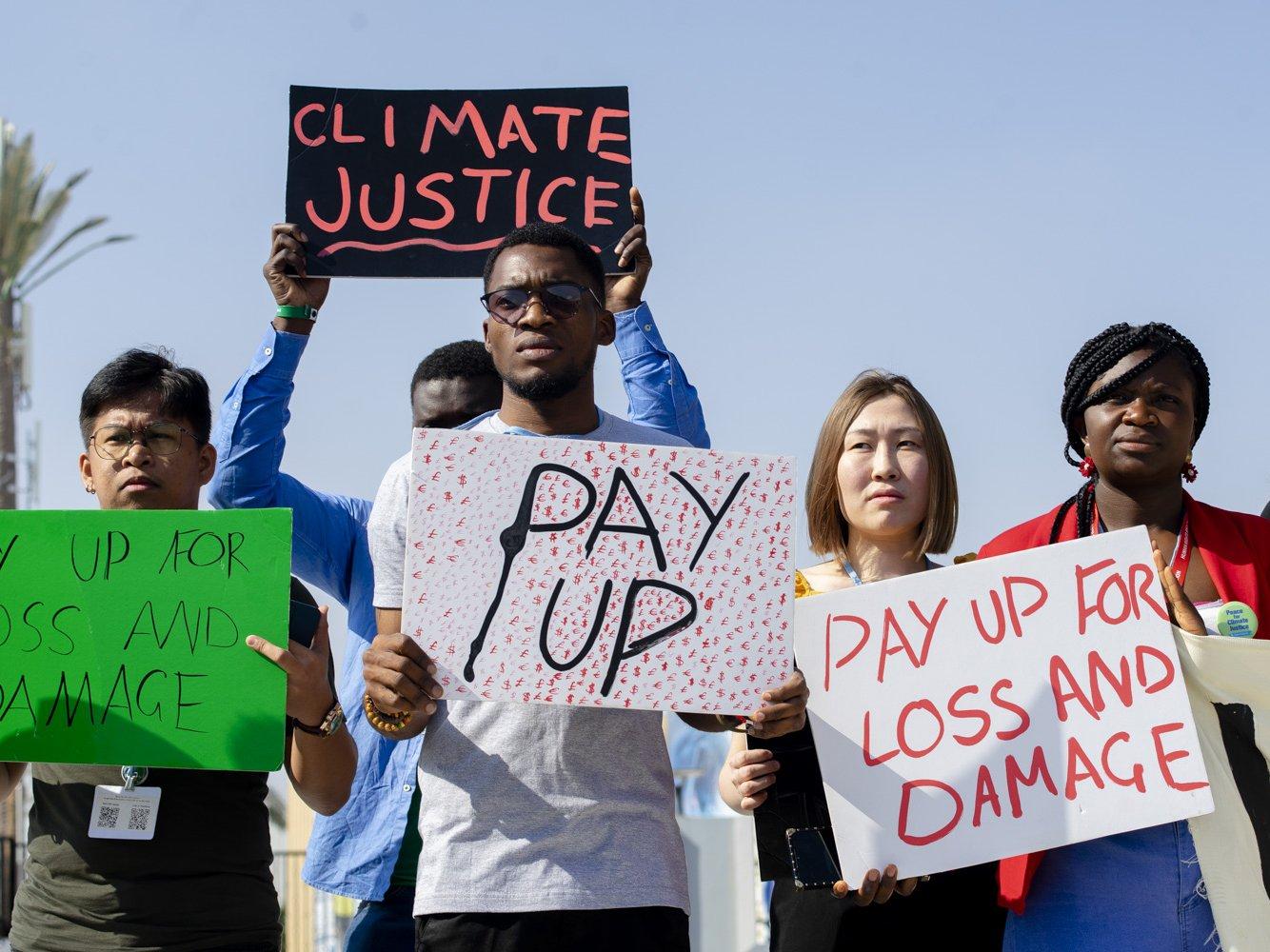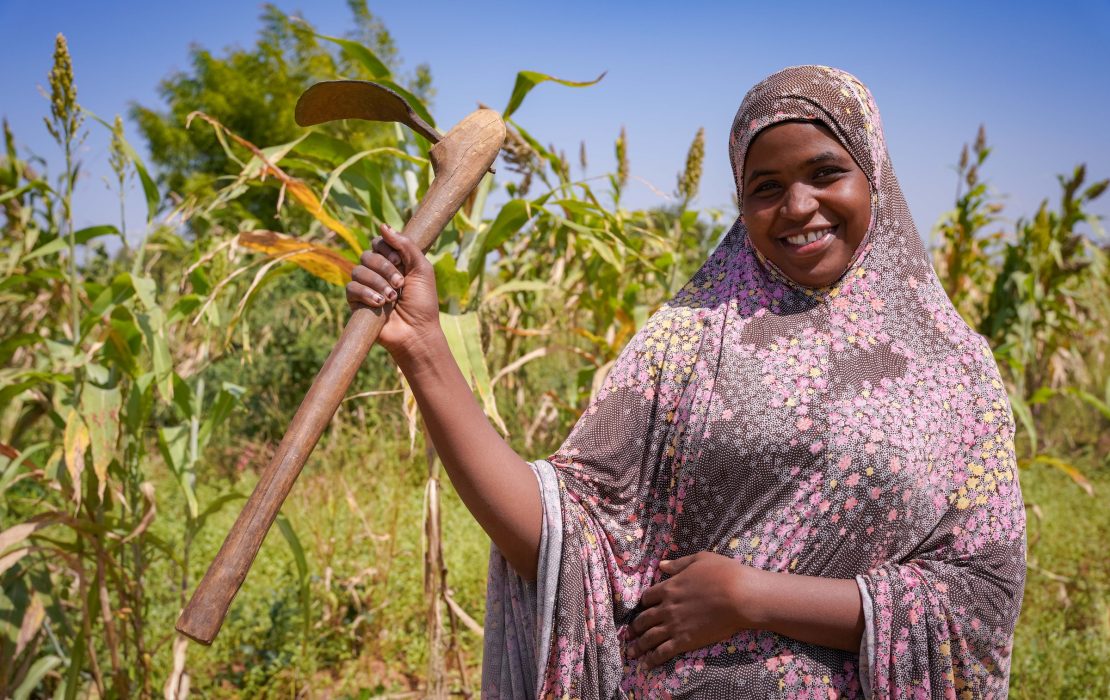
A month after Cyclone Pam struck Tuvalu in 2015, the main square of Nui Island was still under water. Photo: Silke von Brockhausen/UNDP
Extreme weather has caused the deaths of at least 2 million people and US$4.3 trillion in economic damage over the past half a century. Live coral reefs have nearly halved in the past 150 years, and further warming threatens to destroy almost all remaining reefs. More than a billion people globally are expected to be exposed to coastal-specific climate hazards by 2050, which will likely force many to leave their homes.
Climate change is taking lives, diminishing people’s health, destroying homes, infrastructure, and ecosystems, displacing communities, and jeopardizing livelihoods. Entire nations and cultures are disappearing. Indonesia will soon replace its capital Jakarta –the world’s most rapidly sinking city– with a city that doesn’t even exist yet.
While a big part of climate action efforts concentrates on ways to adapt, reduce risks, and build more resilience to these impacts, there are limits to what can be done to prevent such losses. Many countries experience back-to-back sudden onset events, like record-breaking floods, in addition to, and made worse by, on-going slow onset events, such as sea-level rise.
That’s where the term “loss and damage” comes in. Used for decades by many frontline communities and gaining recent popularity, the term has been used to refer to the harm inflicted by irreversible impacts of climate change that occur despite, or in the absence of, mitigation and adaptation efforts.
The latest IPCC report emphasizes the negative impacts and related losses and damages caused by climate change, including –for the first time– impacts on mental health. The science highlights that those most affected by climate change are often the most vulnerable populations, such as Indigenous Peoples and people with disabilities. These vulnerabilities are driven by many factors, including historical and ongoing patterns of inequity, such as colonialism and other forms of systemic marginalization.
Loss and damage can sometimes be monetary. In Dominica, for instance, Hurricane Maria caused damages amounting to over $1 billion, or 226 percent of the country’s GDP in 2017.
But loss and damage that does not have a monetary value also exists. Take Madagascar, where over 80 percent of the island's flora and fauna are unique to the island and cannot be found anywhere else in the world. A new study showed that more than three million years of evolutionary history have already been lost on the island as a result of climate change.
Another example is the unique culture and languages of the Pacific. Many of the world’s 577 critical endangered languages are spoken by the Pacific islanders. As many people in the region are forced to move due to climate impacts, millions are at risk of losing their language, their knowledge, their ways of thinking and living.
The full scope of so-called non-economic loss and damage is still not fully understood and is often connected to economic losses. Its meaning can differ across countries, communities, and groups, which is why it is important for local communities to be a part of identifying non-economic loss and damage. It is also essential to address these non-tangible forms of loss and damage. For example, although it may not be possible to determine the cost of losing a language, programmes can be set up to teach the next generation the remaining local languages to ensure that they are not lost.
Loss and damage is also about climate justice. The severity of climate-induced damages is directly linked with the capacity of the countries to prepare and respond to these climate impacts. Even within countries, vulnerable communities who have historically contributed the least to current climate change are disproportionately affected. The African continent, which accounts for only two to three percent of global greenhouse gas emissions, is expected to experience climate-induced losses of $50 billion annually by 2050.
In 2022, the world saw the damages caused by the historic floods in Pakistan. The sudden event left one third of the country underwater and affected 33 million people, with eight million people reportedly displaced and 1,700 lives lost. The economic losses were estimated at $30 billion, six times the cost of the country’s development program in 2021. This means the floods wiped out gains in development of a year in weeks. To add to the difficulty, much of the financial support available comes in the form of large-scale loans that add to existing debt burdens.
In Somalia, after five consecutive rainy seasons have failed, more than eight million people –almost half of the country’s population– are facing acute food insecurity. Millions have been displaced due to the drought. Some may never be able to go back.

In 2022, floods left one third of Pakistan underwater and affected 33 million people, with eight million people reportedly displaced and 1,700 lives lost. Photo: Muneer Marri

Pakistan's economic losses were estimated at $30 billion, six times the cost of the country’s development program in 2021. Photo: SRSP/ Tauseef Ahmad
Hard-fought gains finally emerge in climate negotiations
To address the many challenges surrounding this issue, there has been a long history of negotiation around loss and damage in international climate meetings under the UNFCCC. These negotiations have been primarily led by small island states and frontline communities who refused to accept the status quo, with hard-fought achievements made over the past decade.
In 2013, the Warsaw International Mechanism on Loss and Damage was created to provide policy and other technical expertise; in 2015, the Paris Agreement included Article 8, which focuses on the need to avert, minimize, and address loss and damage; and, in 2019, the Santiago Network for Loss and Damage was established to provide technical support to countries in need.
The issue of finance, and how to sufficiently fund efforts to address loss and damage, has been at the heart of these discussions. At COP26 in 2021, countries agreed to the Glasgow Dialogue, a three-year process to discuss funding arrangements to avert, minimize, and address loss and damage. This was followed by an historic decision at COP27, one year later, on new funding arrangements for responding to loss and damage, including a new fund.
Following the COP27 decision, a process is now underway to define and operationalize the funding arrangements and fund. The process is led by a Transitional Committee of 24 countries, who are meeting throughout this year to develop recommendations that will be presented at COP28 in December. Observers are also present at Committee meetings to share perspectives and to help ensure inclusive and equitable recommendations emerge that are grounded in reality and use a human-rights based approach.
UN Agencies, including UNDP, and other institutions support the Committee through technical guidance and sharing of information. UNDP is using its broad portfolio in the field of climate change and crisis response and recovery to work with countries and advance progress on loss and damage and help people live with dignity.
While progress has been made, tensions continue over the understanding and approach to loss and damage, as well as historic responsibilities of governments and major polluting industries. Significant questions also remain on governance, access and disbursement modalities, contributions, recipients, and scale of the new fund.
It will be critical for governments to listen to those most affected, quickly resolve these issues so that fund becomes operational as soon as possible, and also dramatically increase mitigation ambition to prevent further losses and damages. The decisions made this year at COP28 –and in the years that follow– will impact how the world collaborates on loss and damage moving forward, and whether vulnerable countries and communities will get the support they urgently need.

The Loss and Damage Youth Coalition (LDYC) demand loss and damage finance at COP27. Photo: Loss and Damage Collaboration



